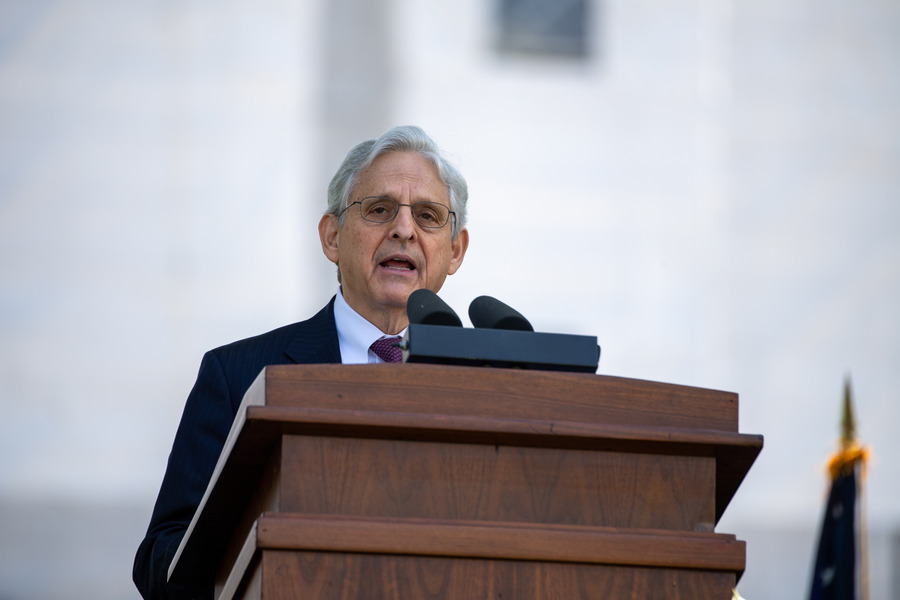DHS’s Joint Task Forces: The Next Chapter
As Secretary of the Department of Homeland Security, Jeh Johnson instituted some necessary reforms to help mature the Department. Many of those reforms were part of the Unity of Effort initiative he kicked off in April 2014 to streamline the Department’s operations, strategy and resource decisions.
Published by The Lawfare Institute
in Cooperation With

As Secretary of the Department of Homeland Security, Jeh Johnson instituted some necessary reforms to help mature the Department. Many of those reforms were part of the Unity of Effort initiative he kicked off in April 2014 to streamline the Department’s operations, strategy and resource decisions.
One such important reform was the creation of Joint Task Forces (JTFs)—operational coordination elements that synchronize DHS components in discrete geographic or functional areas. As part of the Unity of Effort initiative, they are an essential development that will take a serious amount of bureaucratic and political will to implement. Gen. John Kelly, President Trump’s DHS Secretary, should be mindful of the potential pitfalls in the plan.
A quick note at the outset: It is readily acknowledged that DHS was formed in the wake of the 9/11 attacks but often forgotten that this means the Department has had only a little over a decade to form what is expected to be a mature bureaucracy. I recognize it is unfair to compare DHS to a place like the Defense Department, formed over 50 years ago, and will avoid striking such comparisons—but neither should we look the other way on DHS’s missteps or poor morale within the Department.
Joint Task Forces
After two stints at the Pentagon—first as General Counsel for the Air Force and then as General Counsel for the entire Department of Defense—Secretary Johnson sought to bring some of the Armed Forces’ best practices to DHS. The JTFs were implemented over time following Secretary Johnsons 2014 announcements and were finally codified in the latest National Defense Authorization Act.
The JTFs were designed to build capacity within DHS through Joint Duty assignments, and to streamline both operations and information sharing through consolidated coordinating functions and procurement and resource decisions through collaborative planning. In fact, the law stipulates that for each JTF the director and deputy must be from different components and also requires joint duty training to improve operations.
These developments will be recognizable and likely even comfortable for Secretary Kelly. His work at Southern Command gives him more familiarity than most with the threats DHS faces along the country’s southern border and maritime approaches. Secretary Kelly should appreciate the structural and cultural differences between the military and law enforcement and not move too far beyond what the NDAA calls for, despite what his familiarity with the “joint task force” concept might suggest to him from his experience in uniform.
Law Enforcement and the Military
The U.S. military, from the Commander-in-Chief on down, is dominated by the concept of command and control. Orders flow downhill and those orders must be carried out. But at DHS, coordination, rather than command or control, is generally the operative word. This is in part why the JTFs are necessary—to help in coordinating operations and planning between the operational components. Unlike in a military setting, however, leadership from one component within a JTF will not be able to direct operations of another component, at least not at this point in DHS’s evolution—but they can coordinate to ensure that there is greater transparency.
There are other important differences to consider when it comes to drawing parallels to the Defense Department. Notably, the aims of law enforcement agents are vastly different from those of their brethren in fatigues. Agents develop cases and collect evidence. They have to follow due process and read detainees Miranda rights. The Fourth Amendment applies in a way that most soldiers and Combatant Commanders don’t have to worry about. While Secretary Kelly is no doubt conversant in many of the issues on DHS’s plate, the rubric by which his new agency tackles them will prescribe different constraints and opportunities than those of the Defense Department.
Success for JTFs
Secretary Kelly and the JTFs can take some steps to model themselves after the Global and Functional Combatant Commands without getting too far out in front of themselves. First, Global and Functional Combatant Commands ought to be used for more than just synchronizing operations and procurement. The DHS components should leverage the geographic task forces to build relationships with international partners—that is, their Interior ministries, national police, border forces, and maritime security agencies. Secretary Kelly has a demonstrated understanding of threat complexity and the need for a nuanced take on border security that extends beyond our physical shores. This is a prime opportunity to pursue that global approach.
Stronger international relationships and the development of key partners in the Western Hemisphere, Europe, the Middle East and Asia will also better serve DHS’s interagency relationships. And the improved stature of DHS among its federal partners will, in turn, improve foreign policy outcomes for the U.S. and improve the quality of foreign assistance and security sector training provided to foreign partners. These relationships will help improve the interagency rapport needed for investigative potential criminal activity beyond American borders and to implement proven security programs like Pre-Clearance and the Immigration Advisory Program.
Functional Commands should also be leveraged to support investigative and border security work. Secretary Johnson already took one bold step in this direction, creating JTF-Investigations which has already seen success in its operational space. Secretary Kelly should consider also creating a Cyber JTF that leverages the capacities of ICE, the Secret Service, the National Protection and Preparedness Directorate, and even the Science and Technology Directorate. While DHS does not have the operational footprint to support something akin to a Special Operations Command, a Strategic Command, or a Transportation Command, it could support more joint work around emergency management and preparedness, information-sharing and Countering Violent Extremism (CVE).
Secretary Johnson should be proud of this accomplishment and Secretary Kelly should, and likely will, embrace the changes codified in new legislation. The hope is that he recognizes and appreciates the differences between law enforcement and the military—and that he sees those differences as new tools at his disposal and opportunities to improve our homeland security.





